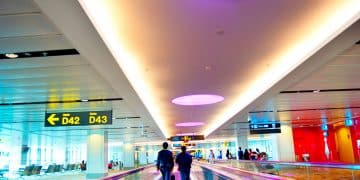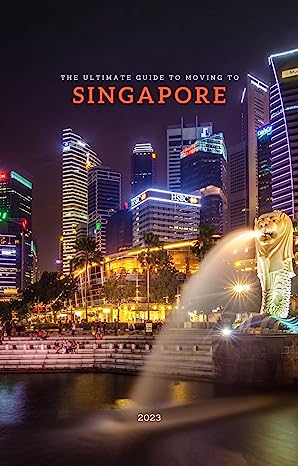Are Singapore MRT trains driverless? This is a common question that many people have when it comes to Singapore’s Mass Rapid Transit (MRT) system. The MRT system is a rail network that serves as the backbone of Singapore’s public transport system. It comprises four main lines: North-South, East-West, North-East, and Circle. Additional lines are currently under construction.
The MRT system has undergone significant upgrades and modernization in recent years, including the introduction of driverless trains. However, not all MRT trains in Singapore are driverless. Some trains still require drivers to operate them. The driverless trains are part of the newer generations of trains that were introduced to the MRT system to improve efficiency and reliability.
In this article, we will explore the topic of Singapore’s MRT trains, including who drives them, whether they are all driverless, whether they are automated, whether they are electric, how they are controlled, and the average speed of the trains. Let’s dive in and find out more about this essential part of Singapore’s public transport system.
Who drives MRT Singapore?
The MRT trains in Singapore are operated by train captains, who are responsible for driving the train and ensuring the safety of passengers. These captains are highly trained professionals who undergo rigorous training before they are allowed to operate the trains. They are also required to undergo regular refresher training to ensure that they are up to date with the latest safety procedures and protocols.
In addition to driving the train, the train captains are also responsible for making announcements to passengers, providing information about the train’s route, and ensuring that all passengers are safely on and off the train.
While the MRT trains in Singapore are not fully automated, they do have an automatic train control system that helps to regulate the speed and movement of the train. This system helps to improve the efficiency and safety of the train, while also reducing the workload of the train captain.
Overall, the train captains play a crucial role in ensuring the smooth and safe operation of the MRT trains in Singapore. They are highly trained professionals who are dedicated to providing a safe and comfortable journey for all passengers.
Are all MRT driverless?
Singapore’s Mass Rapid Transit (MRT) system is one of the most advanced and efficient in the world. The MRT system has been operating since 1987, and it has undergone several upgrades to improve its reliability and performance. One of the most significant upgrades is the implementation of driverless trains, which has been in operation since 2017.
However, not all MRT trains are driverless. The first-generation MRT trains, which are still in operation on some lines, require drivers to operate them. These trains have a cab at the front of the train where the driver sits and operates the train. The newer MRT trains, which have been introduced since 2017, are driverless and do not require a driver to operate them.
The driverless MRT trains are operated by an automated system, which is controlled by a centralised computer system. The system uses sensors and cameras to detect obstacles and ensure that the trains operate safely and efficiently. The driverless trains have several benefits, including increased reliability, improved safety, and reduced operating costs.
Currently, there are six MRT lines in Singapore, and not all of them are fully automated. The North-South and East-West lines, which are the oldest and most heavily used, have a mix of driverless and manned trains. The newer lines, such as the Circle Line and the Downtown Line, are fully automated and operate only driverless trains.
In conclusion, not all MRT trains in Singapore are driverless. The newer MRT trains are driverless and are operated by an automated system, while the first-generation trains still require drivers to operate them. The MRT system is continually evolving, and it is likely that more lines will be fully automated in the future.
Are MRT Automated?
Yes, the MRT trains in Singapore are automated. The North East Line (NEL), Circle Line (CCL), Downtown Line (DTL), and the Thomson-East Coast Line (TEL) are fully automated and operate without drivers. These trains are controlled by a computerized system that regulates their speed, direction, and braking.
The automated system used in the MRT trains is called the Communications-Based Train Control (CBTC) system. The CBTC system uses wireless communication to transmit data between the train and the control centre. The system is designed to ensure that the trains maintain a safe distance from each other and operate at the correct speed.
While the automated system controls the train’s movement, there are still staff members on board to assist with passenger safety and to handle any emergencies. These staff members are known as “rovers” and are responsible for monitoring the train’s operation and ensuring that everything runs smoothly.
Although the MRT trains are automated, there are still some lines that require drivers. The East-West Line (EWL) and the North-South Line (NSL) are currently operated by drivers. However, these lines are in the process of being upgraded to fully automated systems.
Overall, the MRT trains in Singapore are a modern and efficient mode of transportation. The automated system used in the trains ensures that they operate safely and smoothly, providing commuters with a reliable and comfortable way to travel around the city.
Are MRT Trains Electric?
The Mass Rapid Transit (MRT) trains in Singapore are electric. The trains are powered by a third rail that supplies electricity to the train’s motors. The third rail is located on the side of the track and is not accessible to the public.
Electric trains are known for their efficiency and low environmental impact. They produce less pollution compared to diesel-powered trains, making them a more sustainable option for public transportation.
In addition to being electric, the MRT trains are also equipped with regenerative braking systems. When the train brakes, the energy is converted into electricity and fed back into the power grid. This helps to further reduce the amount of energy required to operate the trains.
Overall, the use of electric trains in the MRT system is an important step towards a more sustainable and environmentally-friendly public transportation system in Singapore.
How is MRT controlled?
The Mass Rapid Transit (MRT) system in Singapore is controlled through an automated system. The trains are equipped with a computerized signalling system that controls the speed and movement of the trains on the tracks. The signalling system is designed to ensure that the trains maintain a safe distance from each other and operate at the correct speed.
The automated system uses various sensors and cameras to monitor the trains and track conditions. The system can detect any abnormalities or malfunctions and automatically alert the control centre. The control centre can then take appropriate action to ensure the safety and reliability of the system.
The MRT trains are also equipped with an Automatic Train Control (ATC) system. The ATC system communicates with the signalling system and controls the speed and acceleration of the trains. The system can also detect any obstacles or obstructions on the tracks and automatically apply the brakes to prevent collisions.
The MRT system is designed to be highly reliable and efficient. The automated system ensures that the trains operate at the correct speed and maintain a safe distance from each other. This helps to reduce the risk of accidents and ensures that the system operates smoothly and efficiently.
In addition, the MRT system is constantly monitored and maintained by a team of engineers and technicians. The team is responsible for ensuring that the system is operating at peak efficiency and that any issues are quickly resolved.
Overall, the automated system used to control the MRT system in Singapore is designed to ensure the safety and reliability of the system. The system is constantly monitored and maintained to ensure that it operates smoothly and efficiently.
What is the average speed of Singapore MRT?
The Mass Rapid Transit (MRT) system in Singapore is known for its efficiency and speed. The average speed of the MRT trains in Singapore is around 40-45 km/h (25-28 mph). However, this speed can vary depending on factors such as the time of day, the number of passengers on board, and the distance between stations.
The MRT trains in Singapore are equipped with advanced signalling systems that allow them to travel at high speeds while maintaining safety. The signalling system uses Automatic Train Control (ATC) technology to ensure that the trains are always a safe distance apart from each other.
Despite the high speeds, the MRT trains in Singapore are known for their smooth and comfortable rides. The trains are designed to reduce noise and vibration, providing passengers with a comfortable and enjoyable experience.
Overall, the average speed of the MRT trains in Singapore is impressive, and it is a testament to the advanced technology and engineering that goes into the system.
Are Singapore MRT Trains Driverless? – Key Takeaways
In conclusion, while some MRT trains in Singapore are equipped with an automatic train control system, they still require human drivers to operate them. The current system allows for more efficient train operations and reduced waiting times, but it is not fully autonomous. However, the Land Transport Authority is exploring the use of fully autonomous trains in the future, which could further improve the reliability and safety of the MRT system. Key takeaways from this article include:
- Some MRT trains in Singapore have automatic train control systems, but they still require human drivers.
- The current system allows for more efficient train operations and reduced waiting times.
- The Land Transport Authority is exploring the use of fully autonomous trains in the future.
You may also like:
Singapore Arrival Card: Requirements, Cost, and How to Fill Out




